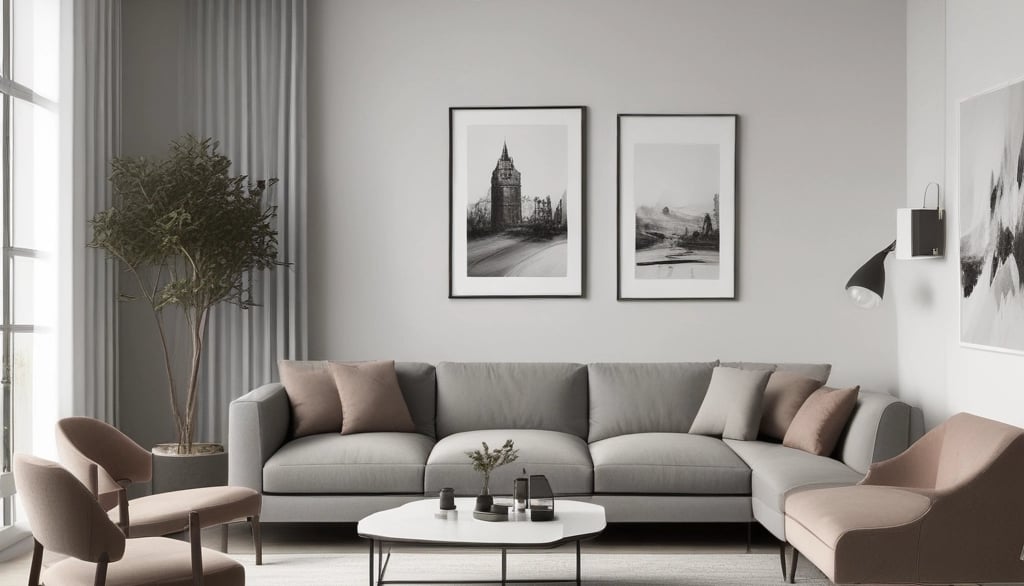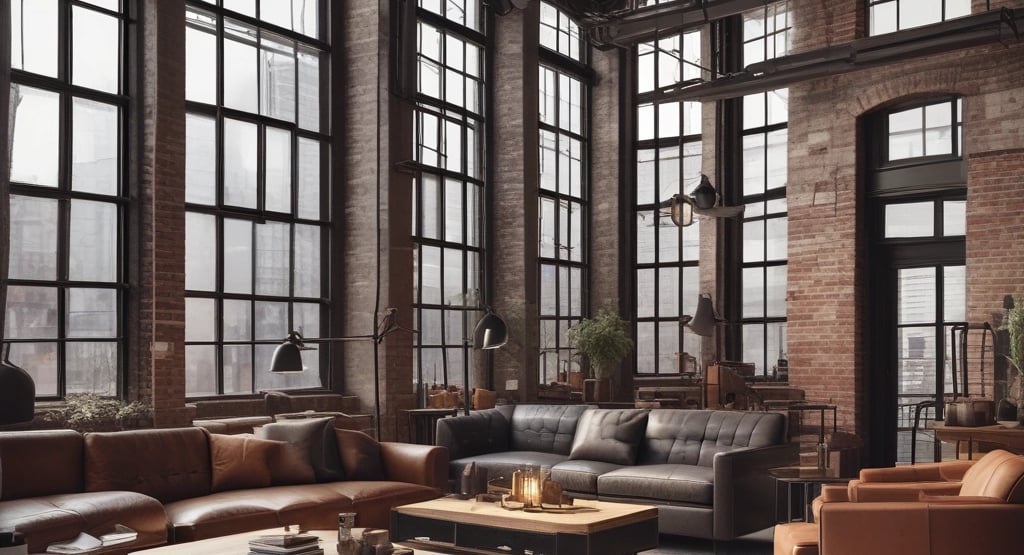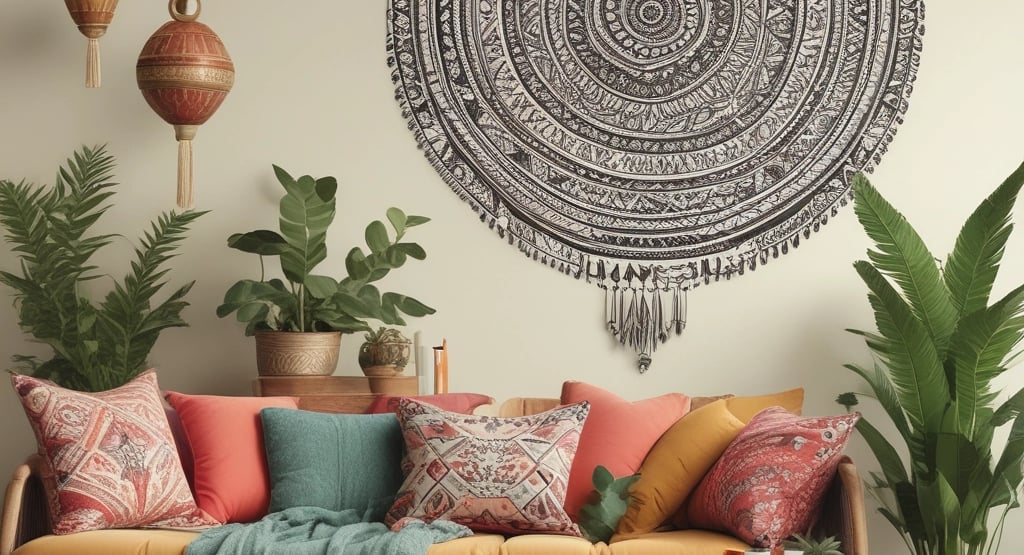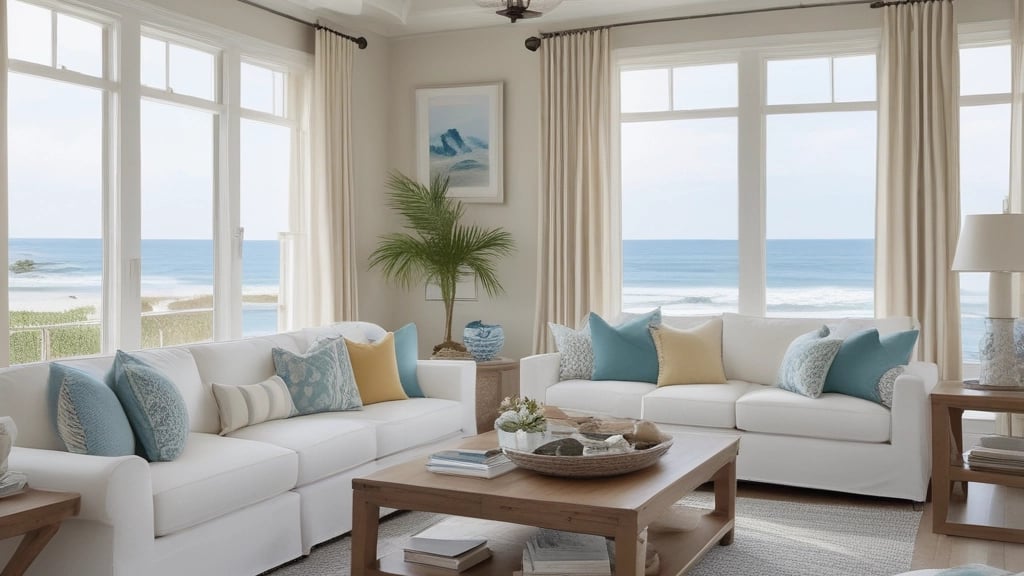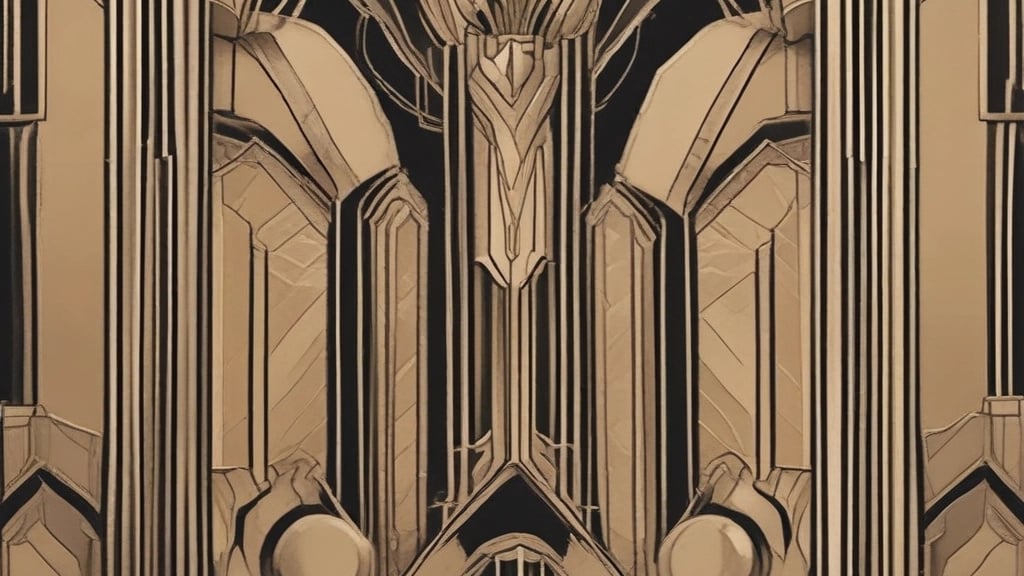Ten Timeless Interior Design Styles
HOME DESIGN IDEAS
Mohamed Amine
10/30/202514 min read
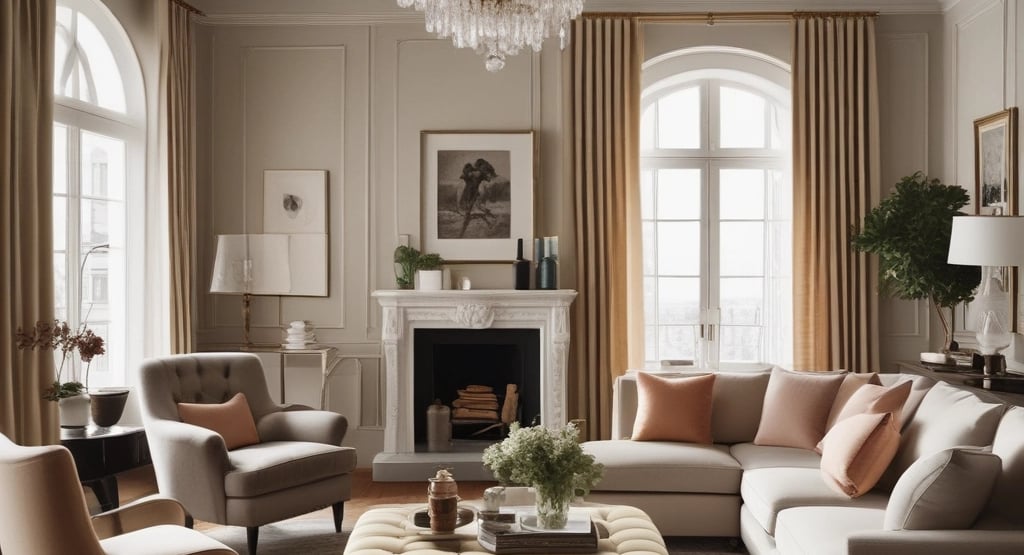

Introduction to Ten Timeless Interior Design Styles
Interior design is an evolving art, shaped by cultural influences, technological advancements, and individual tastes. However, certain design styles have transcended these changes, proving their endurance and adaptability over time. The focus of this blog post is on ten timeless interior design styles that continue to captivate homeowners and interior decorators alike. These styles are characterized by their ability to resonate with people across generations, offering a blend of aesthetic appeal and functional architecture.
Understanding these enduring interior design styles is essential for anyone looking to enhance their living spaces. Whether you are a homeowner aiming to create a harmonious environment or an interior decorator searching for inspiration, familiarity with these established aesthetics can inform your choices and lead to more thoughtful design decisions. By recognizing the elements that define each style, one can appreciate the unique qualities they offer, while also ensuring that they remain relevant in today’s modern context.
This article will delve into the individual characteristics, historical significance, and applications of each style, providing a comprehensive overview that serves as both an educational resource and a practical guide. From the elegance of traditional designs to the minimalism of contemporary concepts, this exploration will highlight how each style has maintained its appeal despite shifting trends.
As we embark on this journey through ten timeless interior design styles, we invite you to reflect on your own preferences and how these classic themes could influence your spaces. The goal is not merely to provide information but to inspire creativity and thoughtful consideration in your interior design endeavors. The integration of these styles can lead to beautiful, functional environments that stand the test of time.
Classic Interior Design: The Elegance of Tradition
Classic interior design is a revered style that emanates elegance and sophistication, drawing from rich historical influences and a deep appreciation for craftsmanship. This timeless aesthetic is characterized by its ornate furnishings, which often include intricately carved wood pieces, gilded accents, and plush upholstery. The focus is on creating a harmonious balance between luxurious elements that convey a sense of grandeur without overwhelming the space.
The color palette within classic interior design tends to lean towards muted tones, such as creams, taupes, and soft pastels, often complemented by bolder accent colors like deep reds, navy blues, or forest greens. This careful selection of colors is crucial, as it ensures that the elegance of the space is maintained while providing warmth and comfort. Additionally, classic designs often incorporate rich textures through the use of fabrics such as silk, velvet, and brocade, contributing to a visually plush and inviting atmosphere.
Architectural elements also play a significant role in classic design; high ceilings, moldings, and elegant arches are common features that illustrate the vintage charm and attention to detail that define this style. Accessories such as chandeliers, antique mirrors, and well-crafted artwork further enhance the timeless appeal of a classic interior. This design style has stood the test of time, continuing to attract those who value tradition and the artistry involved in creating sophisticated living environments.
Classic interior design not only emphasizes the aesthetic appeal but also reflects a specific lifestyle that celebrates heritage and quality. By incorporating elements that evoke a sense of history, individuals can curate spaces that resonate with elegance and permanence, ensuring that their homes remain both stylish and inviting throughout the years.
Modern Minimalism: Simplicity That Endures
Modern minimalism is an interior design style that epitomizes the philosophy of "less is more." This approach emphasizes simplicity and functionality, focusing on the essential elements required for a space to be both aesthetically pleasing and practical. At the core of modern minimalism is the belief that a streamlined environment can foster clarity and tranquility. By removing excess decorations and clutter, this design style creates an atmosphere that encourages relaxation and peace of mind.
Clean lines are a defining characteristic of modern minimalism. Furniture and fixtures often showcase sleek silhouettes that contribute to an overall sense of spaciousness. Unlike more ornate design styles, minimalism avoids heavy embellishments and instead opts for simple geometric forms. This focus on structure and clean lines ensures that each element serves a purpose, promoting a harmonious balance throughout the space.
The color palette in minimalistic design typically revolves around neutral tones. Shades of white, gray, and beige are prevalent, enabling an airy, open feel. These colors not only evoke serenity but also allow for a seamless transition between various rooms within a home. By using a restrained color scheme, modern minimalism places emphasis on textures and materials, enhancing visual interest without overwhelming the senses.
Furthermore, an open floor plan is often favored in modern minimalist spaces. This design choice facilitates freedom of movement while establishing a sense of unity among different areas. The lack of unnecessary walls or partitions opens up the space, providing an unobstructed flow that often encourages social interaction.
Ultimately, modern minimalism cultivates a clutter-free environment that aligns with contemporary lifestyles. Its enduring appeal lies in its ability to create serene, functional spaces that prioritize well-being, making it a timeless choice for individuals seeking a balanced way of living.
Scandinavian Design: Functionality Meets Comfort
Scandinavian design is renowned for its seamless integration of functionality and comfort, making it a preferred choice in many contemporary homes. Originating from the Nordic countries, this design ethos emphasizes simplicity and minimalism, with a focus on craftsmanship and quality materials. A hallmark of this style is the use of natural elements, including wood, leather, and wool, which not only enhance aesthetic appeal but also contribute to a warm and inviting atmosphere.
The furniture in Scandinavian design is characterized by clean lines and geometric shapes, often devoid of excessive ornamentation. This simplicity promotes an uncluttered environment, allowing for enhanced functionality in smaller living spaces. Items such as sofas, chairs, and tables are designed not only to be visually appealing but also to serve practical purposes without sacrificing comfort. The result is a living space that is both stylish and suitable for everyday life.
Color plays an essential role in Scandinavian interiors, which typically feature a palette of muted tones inspired by the natural landscape. Shades of white, gray, and beige provide a backdrop that enhances light and creates a sense of openness. Accents of soft pastels or darker hues can be introduced through textiles and decorative items, adding warmth and personality to the space. These carefully selected colors work together to create a tranquil yet stylish environment that invites relaxation.
This interior design style has gained global acclaim for its ability to create harmonious living spaces that prioritize comfort without sacrificing elegance. By valuing functionality alongside aesthetic appeal, Scandinavian design continues to inspire homeowners and designers worldwide, proving that simplicity can be incredibly sophisticated and conducive to day-to-day living.
Industrial Style: Raw Beauty with Lasting Appeal
The industrial style is a design approach that embodies a rugged aesthetic inspired by warehouses, factories, and urban environments. This unique style fosters an appreciation for raw materials and reclaimed spaces, most commonly seen in converted lofts and modern urban interiors. Its defining characteristics include exposed brick walls, metal fixtures, and open floor plans that emphasize functionality and spaciousness.
Exposed brick is a hallmark feature of industrial settings, offering a sense of history and character to the space. The weathered textures and warm tones of brick create an inviting backdrop that contrasts beautifully with the sleekness of contemporary furnishings. Metal elements, such as steel beams or wrought iron accents, contribute to the industrial flair. These fixtures not only underscore the raw nature of the design but also serve a functional purpose, creating a sense of structure and durability.
The open space concept inherent in industrial style encourages a free-flowing atmosphere that fosters creativity and connection. This layout allows for flexible usage of areas, accommodating both everyday living and social gatherings. Urban dwellers are particularly drawn to this style, appreciating how it complements their modern lifestyle while simultaneously offering a sense of edginess and individuality that mainstream designs may lack.
In addition to its visual appeal, industrial style often incorporates vintage elements and personalized decor. Items such as reclaimed wood furniture, retro lighting fixtures, and eclectic artwork can enhance the authenticity of the design while reflecting the owner's personality. This integration of personal touches fosters a unique ambiance, making each space distinctive and memorable.
As more individuals seek out environments that speak to their unique tastes and lifestyles, industrial design's blend of raw beauty and practicality remains permanently relevant. This enduring appeal ensures that the industrial style continues to inspire and resonate with homeowners and designers alike.
Mid-Century Modern: Retro Lines That Remain Relevant
The mid-century modern design style emerged between the 1940s and 1960s, reflecting a significant historical movement characterized by a departure from traditional aesthetics. This style is celebrated for its emphasis on clean lines, organic shapes, and a harmonious integration of form and function. Mid-century modern interiors often feature a blend of natural elements with innovative materials, presenting an overall aesthetic that is both timeless and contemporary.
One of the hallmark characteristics of mid-century modern design is the use of simple, functional furniture. Iconic pieces, such as the Eames Lounge Chair and the Saarinen Tulip Table, exemplify the style’s influence on modern decor. These pieces often utilize materials like molded plywood, plastic, and metal, showcasing a commitment to craftsmanship and practicality. Furthermore, mid-century modern furniture is typically characterized by tapered legs and minimal ornamentation, which contribute to the overall elegance and streamlined visual appeal.
Color also plays a crucial role in mid-century modern interiors, with vibrant hues often utilized alongside warm earth tones. Accent colors in shades of mustard yellow, teal, and avocado green not only enhance the aesthetic but also bring a sense of energy to the space. Homeowners and decorators continue to embrace this color palette today, leveraging it to create inviting and visually striking environments.
Architectural details further enhance the mid-century modern style. Features such as large windows, open floor plans, and an emphasis on indoor-outdoor living create a seamless flow between spaces. This design philosophy invites nature into the home, reinforcing a connection with the surrounding environment. As contemporary decorators seek to create spaces that reflect both history and modernity, mid-century modern design remains a preferred choice, symbolizing a clever integration of style and functionality that resonates across generations.
Bohemian Design: Artistic Freedom in Timeless Form
Bohemian design, often referred to as "boho," embraces a free-spirited and eclectic aesthetic that celebrates artistic expression. This distinctive interior design style is characterized by its rich textures, bold patterns, and a harmonious blend of cultural influences. It encourages personal expression, allowing individuals to curate spaces that reflect their unique tastes and experiences. The bohemian approach is not confined to rigid rules; instead, it welcomes creativity and spontaneity, transforming interiors into vibrant showcases of individuality.
At the heart of bohemian design are diverse materials and textiles that contribute to a warm and inviting atmosphere. Layering is a key technique; various fabrics such as woven rugs, macramé wall hangings, and embroidered cushions combine to create a tactile landscape. Patterns play a significant role, with florals, geometrics, and ethnic prints frequently intermingling, offering dynamic visual interest. The use of bold colors rich jewel tones like deep blues, emerald greens, and fiery reds juxtaposed with earthy neutrals further enhances the eclectic charm of bohemian interiors.
Cultural influences are another fundamental aspect of bohemian design. Elements drawn from various world cultures such as Moroccan lanterns, Indian textiles, and Eastern European ceramics infuse spaces with a sense of global richness. This style is synonymous with collected-over-time decor, where items with personal stories and memories are showcased, allowing for an atmosphere that is both lived-in and meaningful.
Lighting plays a crucial role in bohemian interiors as well. Soft, ambient lighting from sources like fairy lights and decorative lanterns adds to the relaxed ambiance, creating a cozy retreat. In essence, bohemian design stands as a celebration of individuality, embracing the idea that a home should narrate the story of its inhabitants through a diverse and expressive array of elements.
Transitional Design: The Perfect Balance Between Old and New
Transitional design emerges as a versatile and appealing style, effectively bridging the gap between traditional elegance and contemporary simplicity. This design approach captures the essence of both worlds, harmoniously combining classic elements with modern touches, creating spaces that are not only aesthetically pleasing but also functional. Characterized by its neutral color schemes, transitional design often utilizes shades of beige, gray, and taupe, providing a serene backdrop that enhances the overall ambiance.
Incorporating classic shapes is a hallmark of transitional design. Furniture pieces may feature familiar silhouettes, yet they are often updated with contemporary lines and materials. For instance, a traditional wingback chair may be upholstered in a bold fabric that gives it a modern edge, while still retaining its classic form. This balance allows homeowners to maintain a sense of timelessness while embracing current trends, making transitional design a practical choice for those who appreciate both historical and modern aesthetics.
Another key feature of transitional interiors is the use of modern accents. Lighting fixtures, artwork, and accessories play a critical role in defining the character of a transitional space. Sleek, geometric light fixtures can serve as a striking contrast to ornate furniture, while abstract art can bring a fresh perspective to a traditionally styled room. This ability to adapt and evolve makes transitional design appealing to a broad audience, as it invites personalization such that each space can be uniquely tailored to individual tastes and preferences.
Ultimately, transitional design offers flexibility and adaptability, allowing homeowners to curate environments that reflect their identities while respecting the integrity of traditional design. This approach results in tranquil yet sophisticated spaces, showcasing how the old and new can coalesce seamlessly in interior design.
Coastal Style: Light, Airy, and Forever Fresh
Coastal style is a design approach that draws inspiration from the serene beauty of the beach and the vastness of the ocean. This aesthetic is characterized by light colors, natural textures, and airy spaces, evoking a tranquil atmosphere reminiscent of seaside living. When incorporating coastal elements into interior design, the use of a soft palette featuring whites, light blues, and sandy beige creates an inviting ambiance. These colors reflect the sky and shore, seamlessly blending the indoor environment with the natural world.
Integral to the coastal style is the emphasis on natural materials. Designers often utilize materials such as wood, rattan, and linen, enhancing the organic and relaxed feeling of true coastal living. Light and breezy fabrics, including cotton and sheer linens, are preferred for drapes and upholstery, allowing sunlight to filter through while maintaining a fresh aesthetic. Additionally, incorporating textured elements such as jute rugs and weathered wood accentuates the coastal theme, providing both visual interest and tactile enjoyment.
Spatial arrangement plays a crucial role in achieving a coastal-inspired home. Open floor plans with large windows that allow abundant natural light create a sense of freedom and spaciousness. Bringing the outdoor elements inside through abundant greenery, oceanic artwork, and coastal-themed decor further reinforces this connection to the beach. The overall effect of a coastal design is a home that feels light, airy, and welcoming, making it a perennial favorite for many people seeking tranquility in their living environments.
The coastal style remains popular not only in coastal regions but also in urban and rural areas alike, as it provides an escapism that aligns with a relaxed lifestyle. It is a reminder of leisurely summers spent by the seaside, making every day feel a little bit like a vacation. Its timeless qualities ensure that coastal design will continue to inspire homeowners for many years to come.
Rustic Design: Natural Warmth That Never Fades
Rustic design stems from a deep-rooted appreciation for nature and simplicity, making it a favored choice for homeowners seeking warmth and comfort. This interior design style often encompasses natural materials, which not only enhance aesthetic appeal but also foster a lasting connection to the environment. With a focus on authenticity, rustic design incorporates elements like wooden beams, stone accents, and earthy tones, creating a harmonious yet inviting living space.
One of the defining features of rustic design is the use of exposed wooden beams. Typically sourced from reclaimed lumber, these beams can be found adorning ceilings or walls. Not only do they add visual interest, but they also evoke a sense of heritage and craftsmanship. The use of wood extends to furniture pieces, which often showcase a robust construction combined with natural finishes, adding character and warmth to any room.
Stone accents are another hallmark of rustic interiors. Whether through a fireplace, accent wall, or even as part of the flooring, stone introduces a textural diversity that complements the overall warmth of the design. Natural colors, such as grays, browns, and beiges, serve to ground the space, fostering a serene atmosphere that invites relaxation. These earthy tones are often contrasted with vibrant yet subdued hues, such as deep greens or soft rusts, reflecting a connection to the outdoor landscape.
Moreover, rustic design embraces the aesthetic of simplicity and function. This approach encourages the use of furniture that is not only stylish but also practical, often featuring a handmade quality that celebrates imperfection. An emphasis on cozy textiles, such as wool throws and linen fabrics, further enhances the inviting nature of rustic spaces, making them perfect for gatherings and relaxation.
In essence, rustic design offers a timeless and comforting aesthetic that appeals to individuals drawn to nature and straightforward beauty. By integrating natural materials and maintaining a focus on warmth, this style continues to resonate in modern interior design, ensuring its enduring popularity in homes worldwide.
Art Deco: Glamour and Geometry for a Timeless Touch
The Art Deco design style, which emerged in the 1920s and 1930s, is characterized by its opulence and distinctive geometric forms. This movement represented a break from traditional aesthetics, embracing modernity through bold shapes and an array of luxurious materials. Iconic features of Art Deco include zigzags, chevrons, and streamlined silhouettes that create a sense of sophistication and linear elegance. The use of symmetry is prevalent, along with an emphasis on both vertical and horizontal lines that conjure a sense of movement and dynamism.
Materials play a significant role in Art Deco interiors. Lavish textiles such as velvet and silk are often used, complementing the more robust materials like chrome, glass, and polished woods. Decorative elements like mirrors and metallics are utilized to enhance the feeling of glamour, reflecting light and adding depth to spaces. Intricate detailing, including inlays, marquetry, and relief patterns, exemplifies the craftsmanship associated with this design movement. Art Deco truly embodies a sense of luxury, appealing to those who appreciate artistry and refinement.
The influence of Art Deco extends beyond its historical context, inspiring contemporary designers who seek to incorporate its elegance into modern spaces. Today, the style can be seen in various applications, from residential interiors to public architecture. Its timeless appeal lies in the ability to blend the old with the new, resulting in spaces that feel both classic and fresh. Whether in the form of statement furniture pieces or accent decor, Art Deco continues to captivate design enthusiasts, affirming its status as a lasting choice in the realm of interior design.
Conclusion: The Enduring Nature of Timeless Interior Design
Throughout this discussion on ten timeless interior design styles, we have explored how each style encompasses unique characteristics that continue to resonate with homeowners and designers alike. The enduring nature of these designs can be attributed to their aesthetic appeal and functional adaptability, which allows them to transcend trends that may come and go. From the clean lines of modernism to the rustic charm of farmhouse design, each style offers a distinctive way to create spaces that are both inviting and practical.
Furthermore, the relevance of these time-honored styles is evident in their ability to harmonize with contemporary elements, allowing for a personalized touch within any home. As individuals seek to define their personal aesthetic, the integration of these timeless styles can serve as a foundation upon which to build a unique and cohesive design. This adaptability ensures that whether one chooses to embrace the traditional elegance of colonial design or the minimalist appeal of Scandinavian decor, the resulting space remains attractive and functional.
It is essential to recognize that personal taste plays a crucial role in the design process. While these ten styles provide a framework for creating beautiful spaces, the true essence of interior design lies in the ability to reflect the homeowner's individuality. As you embark on your journey to design your own space, consider these timeless styles not as rigid templates but as sources of inspiration that can be tailored to fit your specific preferences and lifestyle.
In conclusion, the ongoing relevance of these ten interior design styles highlights the importance of both aesthetic value and practicality in creating homes that stand the test of time. By thoughtfully considering these styles, you can craft a space that is not only visually appealing but also deeply personal, ultimately resulting in a home that is both beautiful and enduring.
References
Timeless by Design: Designing Rooms with Comfort, Grace, and History
Author: by Nina Farmer , Andrew Sessa Mitchell Owens
Link: Timeless by DesignAxel Vervoordt: Timeless Interiors
Author:by Armelle Baron , Christian Sarramon
Link: Axel Vervoordt: Timeless InteriorsTimeless Modern Interiors
Author:by Pilar Viladas, Lucien Rees-Roberts
Link: Timeless Modern InteriorsNew English Style: Timeless Interiors
Author: by Mary Graham , Nicole Salvesen , David Nicholls
Link: New English Style: Timeless InteriorsPatina Modern: A Guide to Designing Warm, Timeless Interiors
Author: by Chris Mitchell and Pilar Guzmán
Link: Patina ModernThe Finer Things: Timeless Furniture, Textiles, and Details
Author: by Christiane Lemieux , Miles Redd
Link: The Finer Things100 Cotswolds Interior Design Photography Book: Timeless Charm from England’s Countryside
Link: 100 Cotswolds Interior Design
